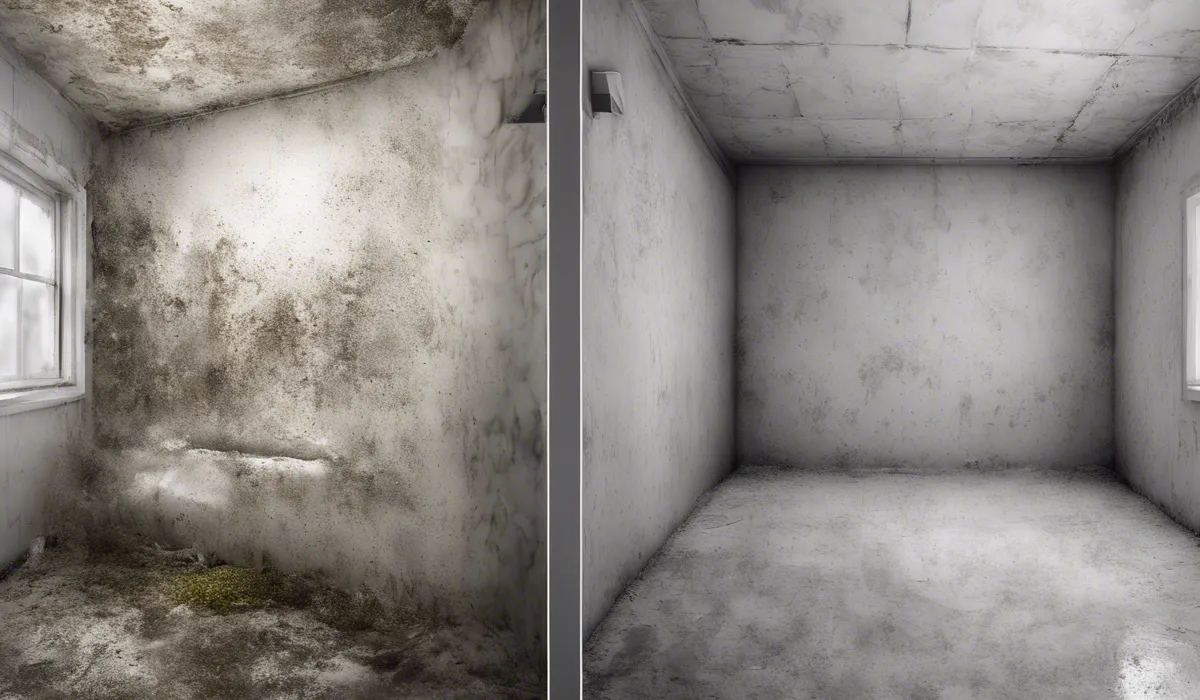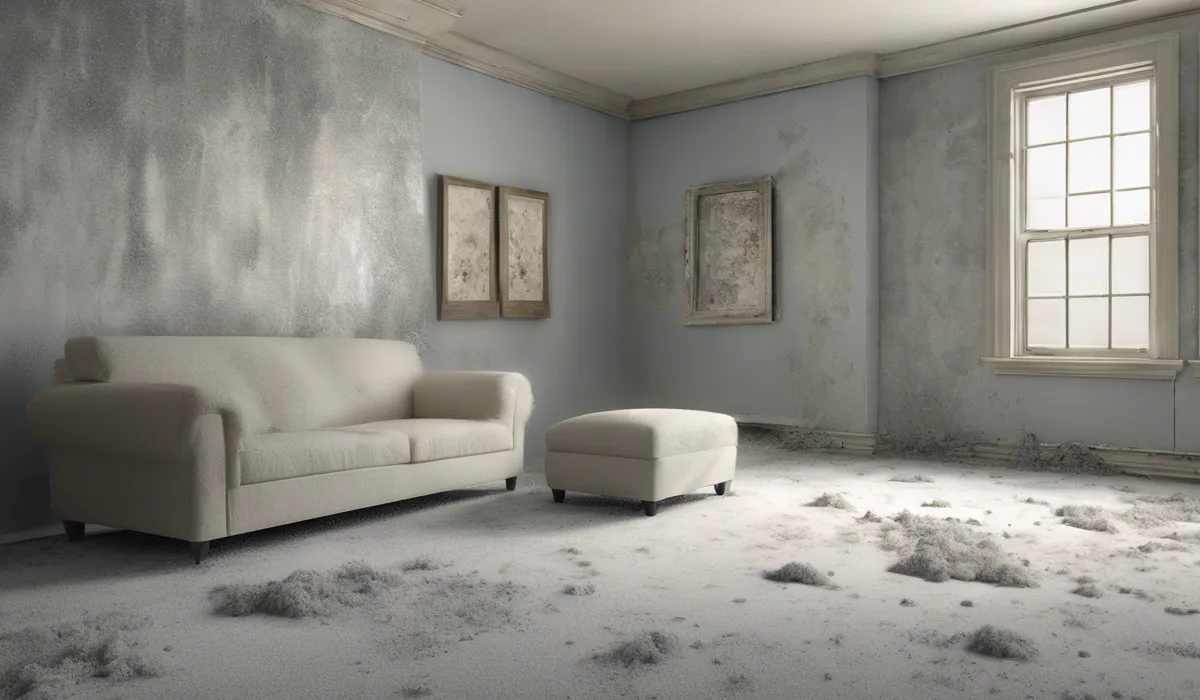Yes, TSP (trisodium phosphate) can kill mold. It is an effective cleaning agent that removes mold from surfaces. However, it does not prevent mold spores from returning, so use it alongside preventive measures.
Understanding Mold and Its Challenges

What Is Mold?
Mold is a type of fungus that grows in multicellular structures called hyphae. It can be found in various colors like black, white, orange, green, and purple.
Mold thrives in moist environments and can grow on many surfaces, including wood, paper, carpet, and foods.
Different types of mold include Aspergillus, Cladosporium, and Stachybotrys, commonly known as black mold.
Common Habitats for Mold
Mold commonly grows in damp and poorly ventilated areas. Basements, bathrooms, and kitchens are prime locations for mold because they provide the perfect combination of moisture and organic material for mold to feed on.
Mold can also develop in HVAC systems and behind walls where leaks are present.
Health Risks of Mold Exposure
Exposure to mold can pose health risks, especially to individuals with allergies, asthma, or compromised immune systems.
Symptoms of mold exposure can include coughing, sneezing, sore throat, and skin irritation. Some molds produce mycotoxins, which can cause more severe health issues when ingested or inhaled.
Eradicating Mold: A Complex Task
Completely eradicating mold can be difficult because mold spores are ubiquitous and can easily spread and grow when conditions are favorable.
It is crucial to address the underlying moisture problem to prevent mold from returning after removal.
The Role of TSP in Mold Remediation

Trisodium Phosphate Defined
Trisodium Phosphate (TSP) is a strong cleaning agent that has been used for decades to tackle tough stains and prep surfaces for painting.
It’s a white, granular or crystalline solid that mixes with water to create an alkaline solution capable of cutting through grease and grime.
Using TSP on Various Surfaces
TSP is effective on many surfaces such as wood, brick, and concrete. It removes mold by breaking down the organic matter that mold feeds on.
However, TSP can be harsh on certain finishes and should not be used on delicate surfaces.
Process for Mold Killing with TSP
To kill mold with TSP, mix the powder with water according to the manufacturer’s instructions.
Apply the solution to the moldy surface with a sponge or brush, scrubbing thoroughly. After cleaning, rinse the area with clean water and dry it completely to prevent mold from returning.
Pros and Cons of TSP for Mold
The benefits of using TSP include its effectiveness and affordability. However, TSP does not prevent future mold growth and can be harmful if not used with proper safety precautions, such as wearing gloves and ensuring adequate ventilation.
Alternatives and Best Practices for Mold Removal

Other Mold Removal Agents
Other agents for removing mold include bleach, vinegar, and commercial mold removal products.
Bleach can kill mold on non-porous surfaces, while vinegar is a milder, more natural option. Commercial products often contain fungicides specifically designed to kill mold.
Comparing Mold Removal Methods
When comparing TSP to other mold removal methods, it is important to consider the surface and the extent of the mold.
TSP is more effective on hard, non-porous surfaces, while other methods may be preferable for softer or porous materials.
Tips to Prevent Future Mold Growth
Preventing mold growth involves controlling moisture levels, ensuring proper ventilation, using dehumidifiers, and promptly repairing leaks. Regular cleaning can also help prevent mold from taking hold.
When to Call the Pros?
If you have a large area of mold or if the mold keeps returning despite your cleaning efforts, it is time to call professional mold remediation services.
They have the expertise and equipment to safely and effectively remove mold from your home.
FAQs About TSP Killing Mold
Can TSP effectively remove mold from surfaces?
Yes, TSP can effectively remove mold from surfaces as it is a strong cleaning agent.
Is TSP a preventive solution for mold growth?
No, TSP does not prevent mold spores from returning; it only cleans existing mold.
Should TSP be used alone to handle a mold problem?
No, while TSP can kill existing mold, it should be used in conjunction with preventive measures to manage mold problems.
Does TSP kill mold spores as well as mold growth?
TSP removes mold from surfaces but may not necessarily kill all mold spores, which are capable of regrowth.
Is it safe to use TSP for all types of surfaces when removing mold?
TSP is a powerful cleaner, but it may not be suitable for all surfaces, especially those that are delicate or prone to damage.
Final Thoughts
TSP, or trisodium phosphate, effectively eradicates mold from surfaces by acting as a potent cleaning agent.
While it can remove existing mold, it doesn’t offer a long-term solution against future mold spore proliferation. To maintain a mold-free environment, it’s crucial to implement additional preventive strategies alongside TSP application.
Useful Resources
- https://extension.missouri.edu/publications/gh5928
- https://lcmspubcontact.lc.ca.gov/PublicLCMS/LinkTracking.php?id=400364&eaid=347032&url=https%3A%2F%2Fwww.redcross.org%2Fget-help%2Fhow-to-prepare-for-emergencies%2Ftypes-of-emergencies%2Ffire%2Fcleaning-up-after-fire.html&tid=SD1C650408261
- https://extension.umn.edu/horse-nutrition/steaming-horse-hay-reduce-effects-mold-and-dust
